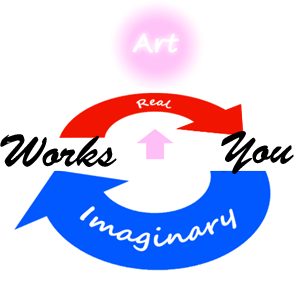








You are in an objective world. Information from the world comes to you through your eyes and ears. In this materialistic view of the world, information comes from the world toward you. Let's call this "the real direction". At the opposite end of the spectrum, there is the idealism worldview. It is the idea that the world exists in your consciousness like a dream. Let's call such a flow of information from you to the world the "imaginary direction". Modern people, especially adults, seem to prefer the real direction where they sit in front of the TV and receive information one-way, but there are also people like art lovers and young children who prefer the imaginary direction, that is, the activation of their imagination. What Montgomery called "Scope for Imagination" in "Anne of Green Gables" is an access point for transmission to the world, reminding us that we, too, used to communicate with the world in both directions when we were children.
Many people deny the existence of UFOs and ghosts, but few people deny the existence of art.
But few people deny the existence of art, because we can open the door and come face to face with art at any time.
So, what is the objective form of art? Let's say two people are looking at a Picasso painting, one is euphoric and the other is not moved at all.
The retinas of the two people show the same pattern of images, but in the consciousness of the euphoric person, something called art arises, which is different from the image on the retina.
In other words, art would be some imaginary phenomenon that arises in the consciousness, such as what we call emotion.
So what exactly is a work of art? It is a real existence that can be seen by anyone. However, considering the fact that the same work of art may be art for one person and not for another, and that there are works that attract a lot of support and works that do not, it can be said that an art work is a real device for creating the imaginary phenomenon of art.
Let's take another look at the person standing in front of the painting. Why are they able to stand still for so long?
It seems as if they are having a dialogue with the work. Perhaps they are not only receiving information from the work, but also spending time throwing information back to it through mental activities called empathy and imagination.
Now, an art model can be seen here. It is to consider the cyclical flow of information from the work to you, and from you to the work, as a condition for art to occur. The qualia that emerge when this circuit is established may be the aura of art.
Here, I would like you to pay particular attention to the flow from you to the work, that is, the invocation of the imagination. In other words, in this model, the creation of art is not the work of the artist alone, but a collaborative effort with you, the viewer. So, how can we trigger our imagination?
It is not as easy as things falling from the top to the bottom. It may be easy for Zen masters who can project a grand universe onto even a blank canvas, or for young children, but the hurdle is surprisingly high. If that is the case, let's think of an art generating function that encourages and amplifies the activation of the imagination from the perspective of an artwork as a device.
I named such a mechanism "Imaginary Circuit".